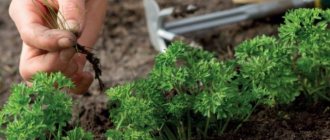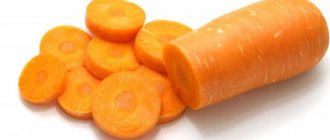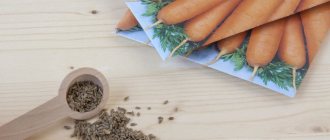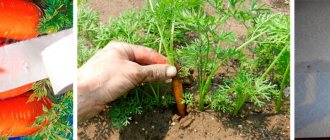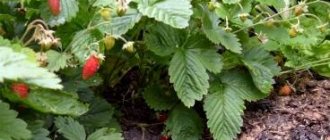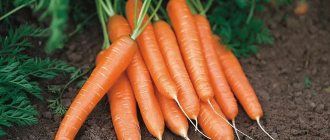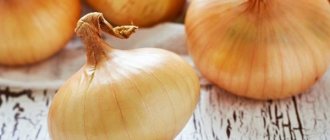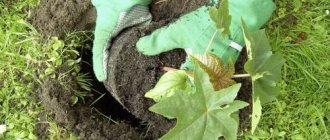In the life of a person who grows vegetables, one day the question inevitably arises of obtaining and saving his own seeds. The reasons may be different: your hobby has grown into a business and you start growing seedlings for sale, or you really liked the anonymous tomatoes that your neighbors treated you to, or you just want to fully explore the capabilities of your favorite variety.
ta sho Nyusha Member of FORUMHOUSE
It is believed that after the third year of collecting its seeds, with the correct agricultural technology, the variety fully develops.
We will tell you how FORUMHOUSE members obtain and save seeds of major crops.
How to grow your own seeds?
Advantages
- Obtaining seed in large quantities, with a shelf life of 2 to 4 years.
- Procurement of seeds of the required varieties.
- Your own seed material is a guarantee of good quality and shelf life.
- Planting is simple to easily grow a large harvest.
- By growing your own seeds you save on buying imported ones.
- Carrots adapt well to the planting conditions where their seeds grew. Imported varieties lack such advantages, despite promises of high yields.
- We ensure proper storage of root crops, which directly affects their ripening.
- When purchasing imported seeds, there is always a risk of substitution with other varieties.
Flaws
- Some carrot varieties may be resistant to flowering, which will result in a lack of seed.
- The presence of a complete and correct set of preparatory actions does not guarantee flowering of carrots.
- Caring for carrots affects its quality, so from a potentially healthy and vitamin-rich product, it can turn into a plant whose frequent consumption is harmful to health.
- Mixing varieties yourself leads to loss of harvest quality.
By correctly applying knowledge, one fruit will give you up to 2,000 new seeds.
The benefits of growing carrots for seeds
Procuring seed material yourself has its advantages:
- It is known that the adaptability of seeds to specific conditions is better, the closer to them they were produced. That is why an imported product often does not achieve the yield stated in the annotation;
- there is no risk of accidental misgrading of planting material or outright falsification of expensive popular varieties when purchased at retail outlets;
- storage rules are strictly followed, which directly affects germination;
- Independent propagation of a variety allows you not only to be confident in its quality, but also to save money by refusing to purchase purchased material.
In home seed production, there is also a danger of a gradual decrease in the valuable qualities of the variety. A common mistake is selecting the “wrong” root crops for growing carrot flower stalks, from which the seeds are subsequently taken. The fact is that for the production of seed products, gardeners most often pay attention to yield, early maturity and fruit size, without taking into account other important characteristics of the variety. Independent “selection” carried out in this way can lead in a few years to its degeneration. Therefore, it is still worth purchasing elite material from trusted manufacturers every 7-8 years.
Instructions: how to plant?
Preparatory stage for the first year
- Select varietal carrot seeds. Hybrid is marked on the packaging with the inscription F1. The latter soon begin to degenerate. Maintaining loose soil and the absence of weeds is an important factor in caring for carrots.
- We plant it in areas rich in sunlight, with no shade.
- We grow carrots until frost arrives, then dig them up. To maintain the properties of seeds from year to year, it is necessary to choose the right root crops.
- We pay attention to the conformity of the varietal shape - straight, bright, juicy, without damage. This can be done in the spring, checking their storage resistance.
- We cut off the tops, saving the tops from which the leaves grow; the buds-embryos for the next year are also located there.
Special storage conditions:
- We lower it into a cool cellar with a temperature of +1-2 °C until spring.
- It is preferable to store them in rows in a wooden or plastic box, separate from the carrots for eating.
Soil preparation:
While the root crop is stored, in the fall we begin to prepare the future spring bed, filling it with humus or compost.
In the second year
The carrots that we saved do not tolerate cold, so it is worth waiting until the third ten days of May to warm the soil from 10-15°C.
Inventory
For work we will need:
- rake;
- shovel;
- pegs;
- gauze or agro-fiber with a density of 20 g/m;
- support for foliage of seed plants up to 1 meter.
Growing material
Root crops preserved without damage from last year.
The soil
- Carrots absorb everything you feed them, so manure should not be used as fertilizer. It also increases the acidity level in the soil, which will harm the root crop.
- If your soil is highly acidic, it needs to be reduced. This process may take 3-4 years.
- To check acidity, you can use 9% food vinegar by dropping it on the ground. If the acidity is low, bubbles or fizzing will appear.
Process
- In May we prepare a bed for planting vegetables. We dig up and level the ground with a rake without using fertilizers. We stick pegs where we want to plant root vegetables and grow seeds to support the vegetation as it grows.
- We make holes with a depth equal to the volume of the root, water the bed with warm water and pour a handful of humus there.
- We place one root vegetable per hole, sprinkle it with earth and gently knead it. Plant vertically or slightly tilted, leaving the head at soil level.
- We water our planting again.
- We do mulching - fill the soil with sawdust, hay or dry grass with a layer of 6-7 cm on the surface of the soil around the carrots.
The benefits of mulching are that we spend less time watering, plowing the soil and clearing weeds. Dry grass and hay after harvesting remain in the soil after digging up the earth and serve as its fertilizer and fertilization. We dry the grass for a couple of days, then spread it out.
Read about methods of planting carrots here, and about preparing seeds for planting here.
Care
- If yellowish leaves appear, we sprinkle them with earth to protect them from the sun.
- It is better to fence the area with a support, because the leaves will grow up to 1 meter in height and the inflorescences that appear will be able to support it.
- If two or more varieties of carrots grow nearby, to prevent accidental pollination of them by each other or by wild crops, cover them with light, air- and light-permeable material. Gauze or agro-fiber that we have prepared will do. It should be removed after flowering has ended.
- After 2-3 weeks, when thick greenery appears, water the plant with milk of lime.
To do this, add water to the lime until it becomes milk-like in consistency. This helps to strengthen root crops, protecting them from diseases and for seed health. Fertilizing the soil with lime milk and organic fertilizers occurs at different times. This reduces the amount of nitrogen needed by plants. - After watering, mulch the soil around the seeds to reduce the impact of temperature changes on the fruit.
- Sometimes in the first year a peduncle grows instead of a root crop, which makes carrots unsuitable.
This is facilitated by many factors: cold spring, unheated soil, seeds of cross-pollinated sown carrots from wild ones, etc. It’s easy to tell when carrots are starting to bloom. From mid-June to mid-July, umbrellas appear on the top, which is the norm only in the second year.
Read more about the principles of caring for carrots after planting here.
Isolate your plants
Seed saving is about preserving genes from specific varieties you like so you can provide more predictable results. In the interest of producing plants with the expected characteristics, you will need to isolate your chosen plants from other varieties.
These plants are pollinated by insects that stop on the flowers, feeding on the nectar and moving the pollen around. If there are other varieties of carrots growing within a certain radius, pollen from them may be transferred to the plants you are interested in, causing unexpected and possibly undesirable results.
The easiest way for you to isolate your carrots is to have enough distance. However, the radius required to successfully isolate plants will vary depending on obstructions such as buildings and other vegetation on your property, as well as your local climate and how wet or windy you are.
Instead of plain milk, oat milk: what’s even better to consume after the holidays?
Much tastier than meatballs: I cook cabbage and meat bombs with cheese and potatoes
Pizza on a thick layer of dough: in our family they call it anti-crisis
How to avoid premature flowering?
- When purchasing seeds, you need to look for varieties with resistance to flowering, among such “Vitaminnaya”, “Konservnaya”, “Nantes 4”, “Incomparable”, “Cold-resistant19”.
- Seeds must be no older than 2 years.
- Select them carefully before sowing.
- The best predecessors of carrots in the garden are cabbage, tomatoes, cucumbers, and potatoes.
- When the temperature drops, the film will save the bed.
- It is better to grow carrots between beacon plants; this will simplify the care of the spaces between the rows. Best suited: lettuce, radishes, garlic and legumes, while avoiding parsley, horseradish and beets with celery (what you can plant carrots next to, read here, and we talked about whether it is possible to place carrots and onions in the same bed here).
- Thinning of seedlings to avoid crowding of crops is carried out 3-4 times during the entire period of their growth.
- Water regularly, instead of daily small portions.
- Excessive fertilization and top dressing promotes flowering.
- During heavy rainfalls, it is better to cover the crops to avoid flooding.
How to collect good material?
Collection time:
- The seeds will bloom for a long time, from July 25; brown-colored umbrellas are an indicator of maturity.
- The collection takes place until August. If a quick cold snap occurs and the umbrellas do not have time to acquire the desired color, then before September 20 we hang them in the attic with a draft.
Preparing umbrellas and collecting seeds:
- We cut off mature umbrellas as they grow, along with a 20-25 cm stem. They grow at the same time, so we cut them in 4 passes.
- In parallel with cutting, the collected umbrellas are dried in the dark.
Obtaining seeds:
The dried umbrellas are placed in bags and gently kneaded with your hands, rubbed through a 3-5 mm sieve, removing excess debris.
Appearance:
Carrot seeds are very similar to parsley seeds, so be careful. The distinctive features of carrot seeds are that they are small, brown with white fibers.
Selection of suitable and unsuitable seeds:
In winter, before spring sowing, we check the seeds for their suitability. We keep different varieties separately from each other. Soak them in a light solution of potassium permanganate. Stir occasionally and this will allow the dead seeds to float while the good ones sink to the bottom.
What should be the storage conditions?
- Store seeds in a dark, moisture-free place, preferably in cotton bags. Cardboard boxes work too.
- It is strictly forbidden to use plastic bags and plastic containers. In this case, the amount of incoming air needed by the seeds will be small, which will contribute to the appearance of mold.
- The ideal moisture level for storing carrot seeds is 10-11%, temperature 10-12 °C.
- They can be stored for 2 to 4 years.
- Once a month we ventilate the seeds, simply open the box and shake it.
Medicinal properties and contraindications
From the above chemical composition it is clear that carrot seeds are very healthy . They can be used in the treatment of:
- Diseases of the spleen.
- Constipation.
- Flatulence.
- Stones in the kidneys and gall bladder.
- Hypertension.
- Helminthic infestations.
- Liver diseases.
- Menstrual irregularities.
However, treatment with carrot seeds is not suitable for everyone. Do not use them if you suffer from:
- Allergy to carrots.
- Ulcer.
- Diabetes mellitus.
- Pathologies of the thyroid gland.
- Asthma.
- Heart diseases.
- Diarrhea.
- Acute or chronic inflammation in the gastrointestinal tract.
- Inflammation of the kidneys.
Be careful when using carrot seeds during pregnancy.
Read about the medicinal properties of carrots here.
